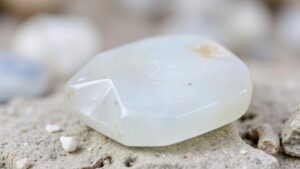The Frozen Time Capsule: Fossil Hunting in Glacial Moraines
The Frozen Time Capsule: Fossil Hunting in Glacial Moraines for Rockhounds and Mineral Collectors
Fossil hunting in glacial moraines presents a unique opportunity for rockhounds and mineral collectors alike. These frozen time capsules, formed from the movement of glaciers, contain sediment and debris that can provide invaluable insights into Earths history. In this article, we will explore the geological processes that create glacial moraines, the significance of these environments for fossil hunting, and practical tips for successful exploration.
Understanding Glacial Moraines
Glacial moraines are accumulations of rock and sediment that have been transported and deposited by glaciers. As glaciers advance and retreat, they erode underlying materials, which are then pushed along with the moving ice. When the glacier melts, the materials are left behind, creating distinct landforms.
There are several types of moraines:
- Terminal Moraines: These are formed at the snout of a glacier and mark its furthest advance.
- Lateral Moraines: Found alongside the glacier, these are remnants of debris that has been pushed up by the glaciers movement.
- Ground Moraines: These occur when the glacier retreats, leaving a layer of till spread over a large area.
According to the United States Geological Survey (USGS), moraines can vary in composition, with materials ranging from clay, silt, sand, gravel, to boulders. This diversity enhances the potential for finding significant fossils and mineral specimens.
The Importance of Fossils in Glacial Moraines
The fossils preserved in glacial moraines can provide crucial information about past climates, ecosystems, and species that once thrived in various regions. For example, the discovery of preserved plant fragments in sediment layers can indicate historical climate conditions. A notable example is the finding of plant fossils in the La Barge Formation in Wyoming, which have offered insights into the late Cretaceous periods environmental conditions.
Statistical data from paleontological studies suggests that over 60% of known fossil species have been discovered in sedimentary deposits, including those found in glacial environments. This represents a rich hunting ground for any collector.
Practical Tips for Fossil Hunting in Glacial Moraines
Engaging in fossil hunting within glacial moraines can be thrilling, but it requires knowledge and preparation. Here are some actionable tips to ensure a fruitful expedition:
- Research Locations: Identify known glacial moraine sites in your area. Resources such as state geological surveys and local rockhounding clubs can provide valuable insights.
- Proper Gear: Equip yourself with the right tools, including a geological hammer, chisels, and a sturdy backpack. Always wear durable footwear and bring climbing gear if necessary.
- Understand the Law: Familiarize yourself with local laws regarding fossil collection. Some areas may require permits or have restrictions to protect natural resources.
- Observation Skills: Hone your skills in identifying geological formations and fossils. Look for distinctive shapes, textures, and colors that may indicate the fossilized remains of prehistoric life.
Real-world Applications for Collectors
The materials and fossils collected from glacial moraines can serve various practical purposes. Rockhounds can enhance their personal collections or provide educational material for schools and museums. Also, the scientific community benefits from the fieldwork conducted by enthusiasts, as amateur collectors often discover new fossil sites and contribute to biodiversity records.
For example, the contributions of amateur paleontologists in the collection of Pleistocene era fossils have led to significant discoveries in North America, such as the remains of woolly mammoths and saber-toothed cats found in glacial outwash deposits.
Conclusion
Fossil hunting in glacial moraines offers an exciting avenue for rockhounds and mineral collectors, combining adventure with scientific exploration. By understanding the geological processes at play, the types of fossils that can be found, and employing effective collection strategies, enthusiasts can reap the rewards of their efforts while contributing to our understanding of Earth’s past.
In summary, remember to:
- Conduct thorough research on potential sites and legalities.
- Use the appropriate tools and gear for safe collection.
- Develop observation skills to identify valuable fossils effectively.
As you embark on your fossil-hunting journey in glacial moraines, you hold the potential to unlock the mysteries of ancient life frozen in time.



